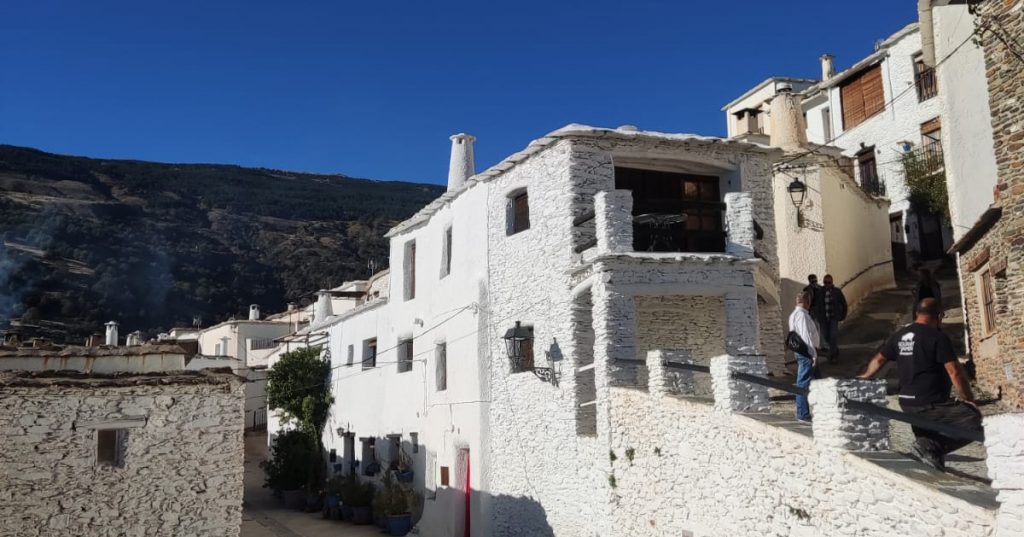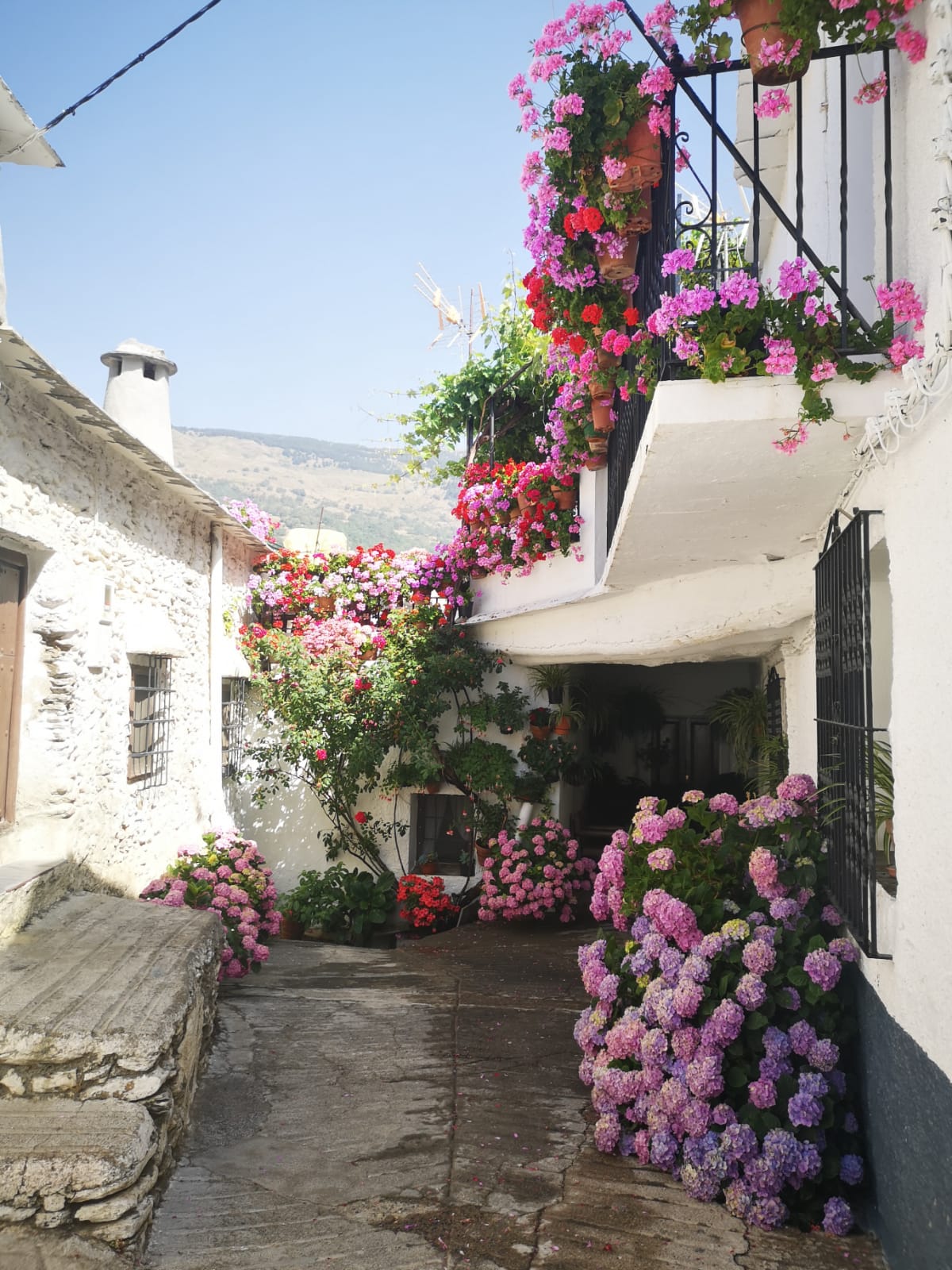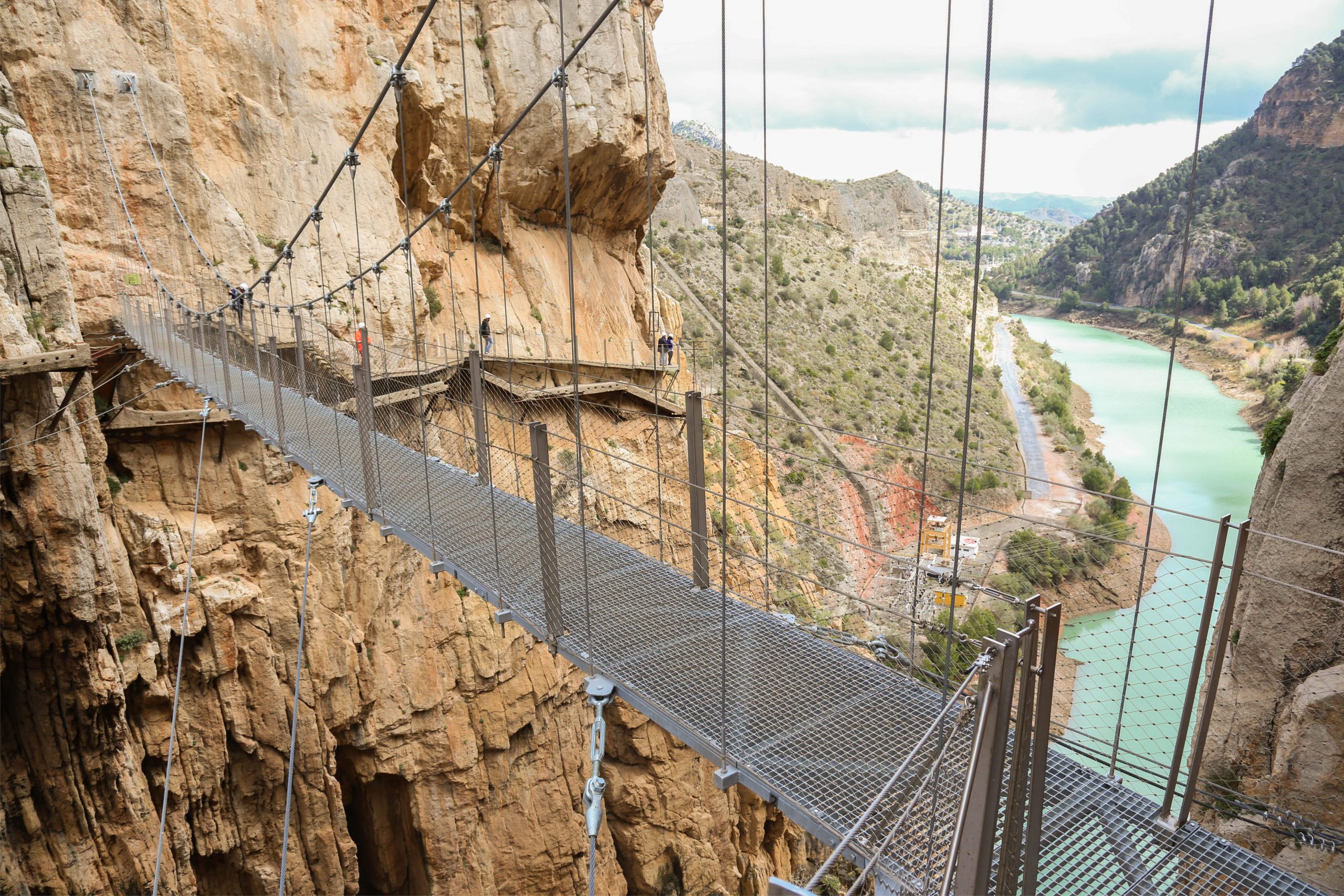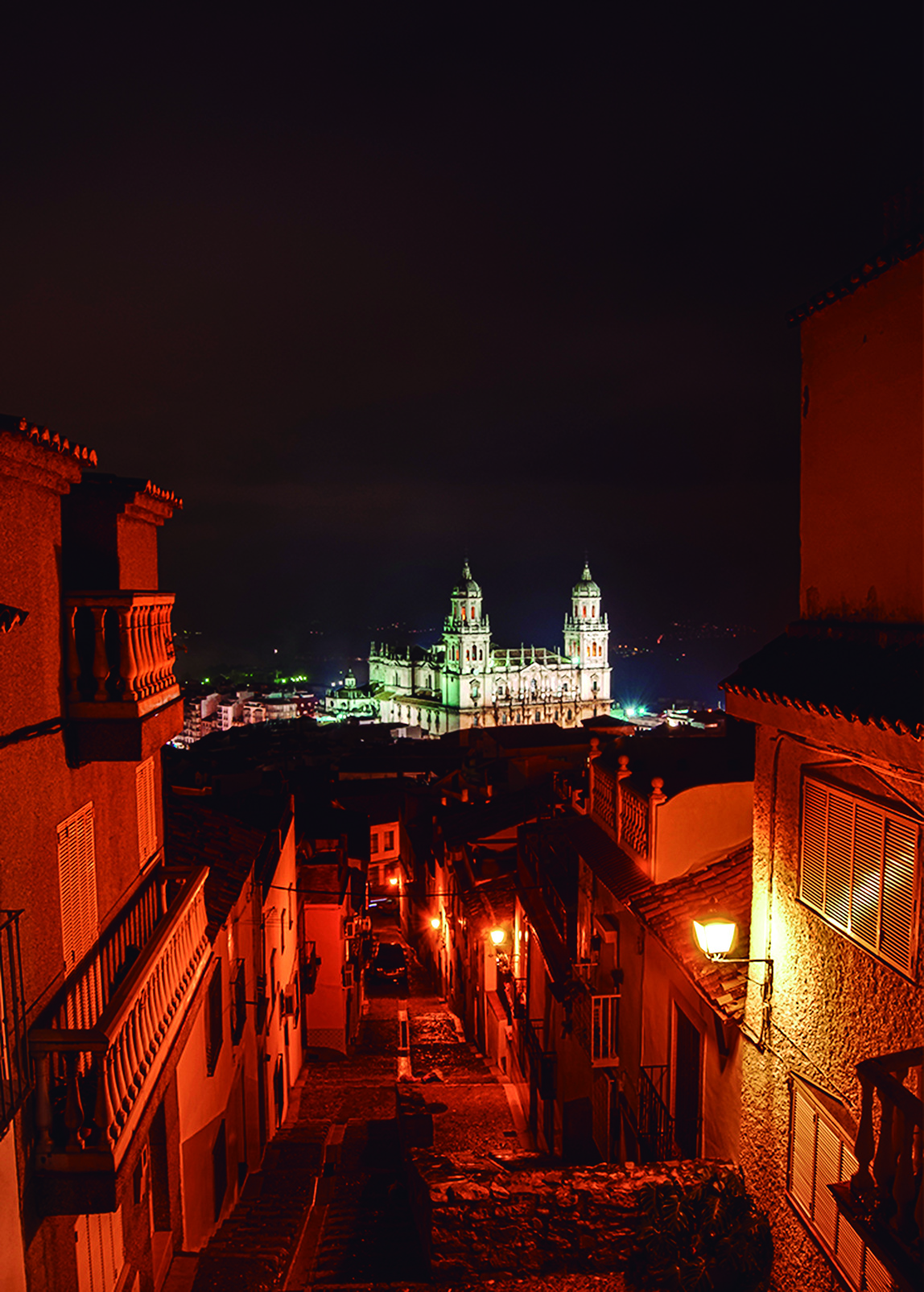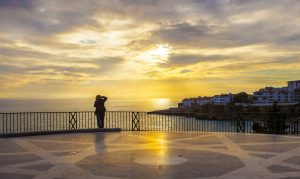Located just 50 kilometers from Granada city center, between Granada and Almeria, the Spanish villages of the Alpujarras are known for their quietness and their traditions from different cultures: from the Roman irrigation system to the flat-roofs of the Berbers, here is our selection of the top 10 must-visit villages in La Alpujarra:
1. Pampaneira
Its name comes from the Latin word “pampinarius”, which could be interpreted as “vineyard or wine field”, referring to the ancient grape cultivation in the area in roman times. Pampaneira is one of the most picturesque villages in the Alpujarras, with its whitewashed houses, cobbled streets, and stunning mountain views.
Something very characteristic of the buildings in Pampaneira is their historic white houses with flat roofs, typical Berber chimneys, and arched alleyways or ‘tinaos’ in Spanish.
It is also a great place to shop for unique souvenirs (especially rugs and ceramics) and sample traditional Alpujarran cuisine.
2. Capileira
Capileira is the highest village in the Poqueira Valley, and it offers some of the most breathtaking views of the Sierra Nevada mountains. Something that you cannot miss is the Mirador de Perchel. From this viewpoint, you can see to the north the Veleta peak, and to the south the villages of Bubión and Pampaneira. Even you can see the Mediterranean Sea in a clear day. That is why this village (or region) is a very popular place for hiking and trekking.
Something amazing that surrounds this village is the number of public fountains and water canals, whose water comes directly from the highest peak of Sierra Nevada. Also, take a stroll along the winding streets filled to the brim with red and pink geraniums, and look out for the small shops selling sweet local honey in colored ceramic jars and fruit jams made in the mountain villages.
3. Trevélez
Trevélez is the highest village in mainland Spain, sitting at an altitude of 1,476 meters, and it is known for its delicious “jamón serrano” (serrano cured ham). The village is divided into three barrios: bajo, medio, and alto. The lower barrio, Barrio Bajo, is the most touristy of the three, with the highest concentration of hotels, restaurants, and shops. Barrio Medio is the central barrio, and it is home to the village’s church and town hall. Barrio Alto is the highest barrio, and it is the most peaceful and authentic.
One of the main attractions of Trevélez is its jamón serrano. The village’s high altitude and dry climate provide the perfect conditions for curing ham. Trevélez jamón serrano is known for its delicate flavor and its melt-in-the-mouth texture. Visitors can sample the local ham at one of the many restaurants in the village, or they can buy it from one of the many ham shops. It is also a great place to try other local specialties, such as chorizo, morcilla (blood sausage), and queso de cabra (goat cheese).
4. Lanjarón
This village is considered the gateway to the Alpujarra coming from Granada. Lanjarón has a long history related to the healing properties of spring water, dating back to the Roman era, and they have attracted visitors from all over the world for centuries. That is why you can find a spa based on water’s beneficial therapeutic effects for health.
Another important food that we can learn more about, thanks to the museum in Lanjarón, is honey: gardens, the collection of hives from different periods, and the Honey Museum itself. All are designed to teach about the wide world of the bee in an entertaining way.
5. Órgiva
It is the largest town in the Alpujarras and a great base for exploring the region. Órgiva is known for its vibrant atmosphere, its weekly market, and its many shops and restaurants. Every Thursday, the market square is filled with stalls selling fresh produce, local products, and handicrafts. Visitors can find everything from jamón serrano (cured ham) and chorizo to pottery and jewelry at the market.
Órgiva is also a melting pot of cultures, where everyone is welcomed in ‘Beneficio’, one of the oldest hippie communes in all of Europe. In the late 70s, the earliest hippies traveled from Ibiza to Alpujarra, and since then, their free lifestyle and philosophy have remained and expanded considerably.
6. Bubión
Bubión is a charming village located between Pampaneira and Capileira with no more than 300 inhabitants, and is part of the international slow sustainable tourism movement, which tries to balance the tourism industry and the quality of life of the local people. So if you are looking for a slow-paced weekend, this is your village.
The architecture of Bubión, as well as that of all the towns in the Alpujarra, is characterized by houses without roofs. Since the time of Arab occupation, houses began to be built with “launa” (a Magnesian type of clay), resulting in “terraos” (a terrace type of space that is sometimes shared with several side or front houses, passing to the other area of the neighborhood without stepping on the street). It is said that they have a horizontal shape to prevent the accumulation of snow at the exits of the house; so the snow stays on the ground.
7. Pórtugos
One of the best things to do in Pórtugos is to simply wander around and explore the village’s charming streets and alleyways. Be sure to stop and admire the beautiful houses, many decorated with flowers.
But they are not its houses and flower pots that make the town famous, they are the ferruginous waters of the “Fuente Agria”. A little spring that is located on the outskirts of Pórtugos, in the middle of a calm natural setting. A beautiful waterfall dyed red by the iron-rich waters has, over the centuries, excavated in the rock a deep circular cavity covered by ancient trees and popularly known as “El Chorreón”.
8. Pitres
Located 75 km from Granada and at an altitude of 1,200m, with about 400 inhabitants you could find Pitres, one of the six villages that belong today to the municipality of La Tahá, named after the territory administrative divisions during the Kingdom of Granada, in the Nasrid era.
If you’re looking for a more active experience, Pitres is a great base for hiking in the Sierra Nevada mountains. There are a number of trails to choose from, ranging from easy walks to challenging hikes.
9. Soportújar
Soportújar is a village that is known as the “village of the witches.” It is decorated with witch-themed murals and sculptures, and it hosts a number of witch-related events throughout the year. In this town, the witches are the protectors since the town offers an itinerary between its caves, houses, fountains, and witch statues. From Baba Yaga to a coven at the “Mirador del Embrujo” the witches will accompany you on your visit to this enchanted town. Don’t leave without making a wish at the wishing well.
10. Laujar de Andarax
And last but not least, a village from the Alpujarra part of Almeria; considered one of the most beautiful towns in the Alpujarra of Almería, Laujar de Andarax. Visit the place where Boabdil, the last sultan of the Kingdom of Granada, lived after his expulsion from the Alhambra in 1492, and this was also where Morayma, his wife, spent her last days. The remains of the Alcazaba where they stayed are still preserved today.
Besides, this is the perfect place to find a souvenir like a “jarapa” (a rough handmade carpet made from leftover fabric).


